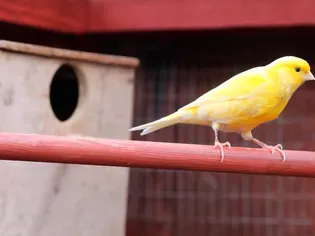The Problem With Sand and Concrete Bird Perches
Updated on 05/26/24

The Hidden Peril: Exposing the Problem with Sand and Concrete Bird Perches
As dedicated bird enthusiasts, we strive to provide our feathered companions with the best possible environment to thrive. Unfortunately, many well-intentioned bird owners unknowingly expose their beloved pets to a hidden danger lurking within their cages: sand and concrete perches.
While these materials may seem innocuous, they conceal a myriad of health risks that can compromise the well-being of our cherished birds. Understanding the severity of this issue is paramount to safeguarding the health and vitality of our beloved companions.
The Gritty Truth: Sand Perches
Sand, often used as a perching material, poses significant respiratory hazards to birds.
* Particulate Matter Inhalation: Sand particles, when disturbed, become airborne and can be inhaled by birds, leading to respiratory irritation and potential damage to the delicate lung tissue.
* Allergic Reactions: Sand can trigger allergic reactions in some birds, causing irritation, wheezing, and difficulty breathing.
* Feather Damage: Sand particles can become lodged in feathers, causing discomfort, breakage, and impeding the bird's ability to fly.
The Unstable Foundation: Concrete Perches
Concrete perches, known for their durability, present a different set of risks to bird health.
* Hard and Unnatural Surface: Concrete is an unforgiving material that lacks the cushioning provided by natural perches like wood or tree branches. This can lead to foot problems, such as pressure sores and bumblefoot.
* Joint and Bone Damage: The hard surface of concrete can put excessive strain on a bird's joints and bones, potentially leading to arthritis, lameness, and deformities.
* Contamination: Concrete can harbor bacteria and other contaminants that can be ingested by birds, causing health issues.
Examples to Illustrate the Dangers
* Case Study 1: A pet cockatiel named Sunny developed severe respiratory problems after being exposed to sand perches for an extended period. Upon examining Sunny, the veterinarian discovered that her delicate lungs were inflamed and irritated due to prolonged sand inhalation.
* Case Study 2: A budgie named Tweety was diagnosed with bumblefoot, a painful infection caused by the pressure applied to her feet from standing on a concrete perch. The infection required extensive treatment and surgery to resolve.
Alternatives for Bird Perches
To ensure the safety and well-being of our feathered friends, it is crucial to replace sand and concrete perches with more suitable alternatives:
* Natural Wood Perches: Branches from fruit trees or manzanita provide a comfortable and natural surface for perching, mimicking their natural habitat.
* Lava Rock Perches: Durable and porous, lava rock perches offer excellent traction and support without being too hard on a bird's feet.
* Rope Perches: Flexible and malleable, rope perches provide varied textures and can stimulate a bird's feet and beak.
Conclusion
The health and happiness of our beloved birds should be our top priority. By avoiding sand and concrete perches, we can eliminate potential health hazards and ensure that our feathered companions enjoy a long and fulfilling life. Embrace safer alternatives and create a healthy and stimulating environment for your treasured birds.
Remember, our goal is not to scare you but to empower you with knowledge. By being informed about the dangers of sand and concrete perches, you can safeguard your bird's well-being and provide a nurturing environment where they can thrive.
Explore More Pets

Small Bird Breeds
Gloster Canary: Bird Species Profile

Small Bird Breeds
Java Finch: Bird Species Profile

Small Bird Breeds
Zebra Finch (Chestnut-Eared Finch): Bird Species Profile

Small Bird Breeds
Alexandrine Parakeet: Species Characteristics & Care

Small Bird Breeds
Canary: Bird Species Profile

Small Bird Breeds
Lovebird (Pocket Parrot) Species Profile

Small Bird Breeds
A Guide to Pet Budgie Birds

Small Bird Breeds
Types of Small Parrots
